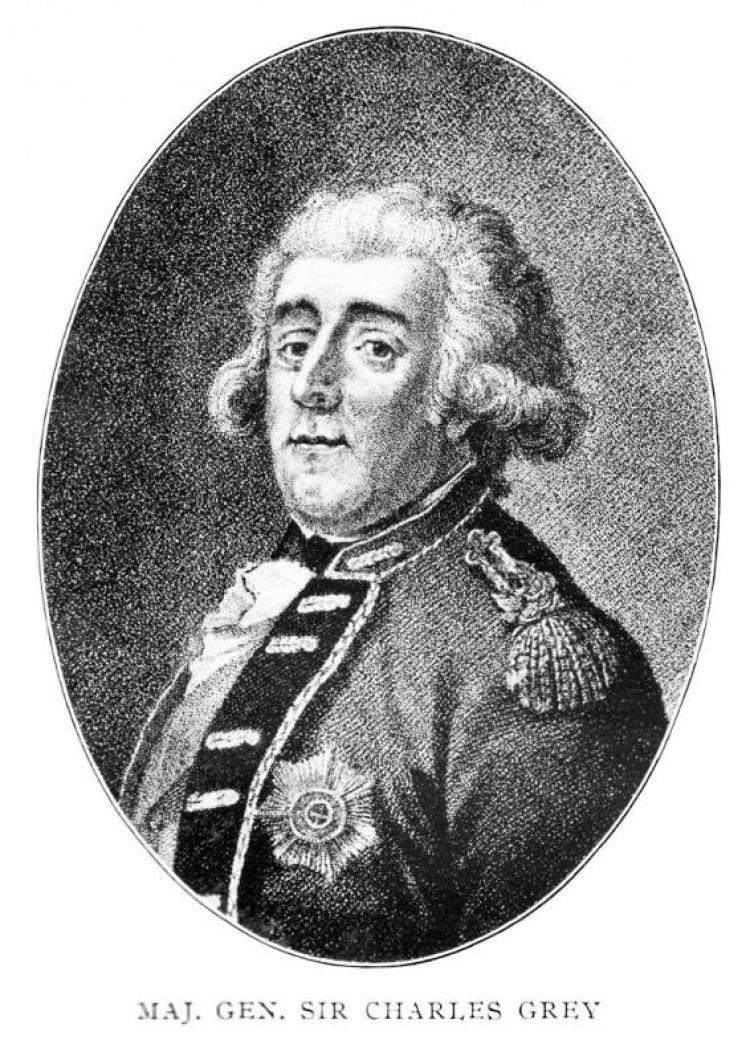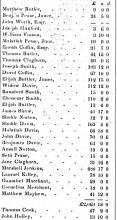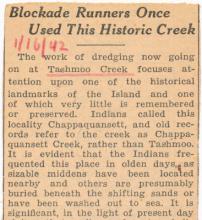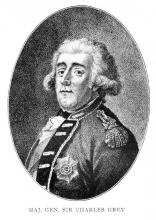Anne Morrow Lindbergh wrote, “It doesn’t matter that it can’t last, that we don’t find it more often. To know that there has been such perfection - it is worth living for. It exists. It has been - it is. One can contemplate it and feel a complete peace.”
We reach into the past to uncover characters, words or deeds that may reaffirm our belief in the principles of our nation or the lifestyle of our Island. We try to create an idyllic past - the ‘perfection’ of which Mrs. Lindbergh wrote - so that we may strive toward an idyllic future.
The history of Martha’s Vineyard during the American Revolution does not always offer these patently reassuring images. But it offers other images that confirm our beliefs because it shows the independent character of the Island and its people.
On October 19, 1774, citizens of Tisbury met in the courthouse to discuss the formation of a revolutionary committee, as recommended by the newly founded Continental Congress. Three weeks later, the county congress adopted a series of resolutions which called for a rejection of the “Arbitrary and Despotick Government” of King George III.
A committee for safety began to organize the Island defense in 1775, and petitioned the General Court in September for the authority to enlist men. According to Charles Edward Banks, author of the source for this article The History of Martha’s Vineyard, the small population of the Island - 2,881 in 1776 - was matched by an equally small revolutionary spirit, and a letter written by the chairman of the committee on safety revealed that most Islanders chosen for duty had refused to take their oath of office:
“The real state of things here, Sir, as I apprehend is this,” the letter ran. “There are some here who are really not well affected to the present Government in this Country.”
A question arose several months after this letter was written as to whether the Vineyard had been supplying the British with provisions, but the General Court ultimately cleared the Island of these charges. That out of the way, the Island continued to petition for troops and arms to help in its defense. By July 1, 1776, there were about 500 men stationed on the Island, half local militia, half from off-Island.
It was a sufficient force, large enough to ward off small attacks or make small skirmishes against the British ships passing through the Sound. But on Nov. 16 of that year, an order was given by the General Court for all forces to leave the Island. General Howe was advancing in New York, and troops there were seriously outnumbered. Twenty-five men remained to defend the Island, and King’s troops took Newport as a stronghold.
More petitions were sent out - by Tisbury in December, 1776, by Chilmark in January of 1777. But the word from the General Court was handed down as follows:
“Whereas the Island of Martha’s Vineyard is so situated that it must put the State to great expense to defend it should our Enemies make that an object of their attention, and as the removal of the Inhabitants of said Island to the main would be attended with many and great Inconveniences to them and cost to the state.
“Therefore resolved: that it be and it is hereby recommended to the Inhabitants of Martha’s Vineyard to send off said Island as many of their cattle, sheep and other goods as are not absolutely necessary to their present support, and it is recommended to the Justices of the Peace, the Field officers and Selectmen of the several Towns on said Island to consult and agree upon such a mode of conduct of the People of said Island to pursue as they may judge most proper and it is recommended to said inhabitants strictly to pursue the mode that shall be so pointed out for their safety.”
Needless to say, the Islanders were not pleased on being left without any aid, and no reference was made to the war in town records during the next 12 months. The Islanders could not have wanted to invite the attack that active war efforts would bring.
A total of 4,333 British soldiers were sent to get provisions for the companies stationed in Newport in September of 1778. Under the command of Major General Sir Charles Grey, a good number of them sailed into Vineyard Haven harbor in more than 40 ships, and Beriah Norton, colonel of the Island militia, went down to the landing to see what they wanted. General Grey let it be known that the British would have the Island’s sheep and cattle, or would resort to force. To clarify the point, they sent the following letter:
“Beriah Norton...
Colonel of Militia at Martha’s Vineyard...Is required to order the Militia of the Island to assemble at Day Light to Morrow morning, Collect the horned cattle (milch Cows excepted) & Sheep in their Different Districts & proceed with them to Homeses hole. They are expected at the appointed place precisely at two in the afternoon, in failure of which the Troops will March at the hour to Collect them. The Militia are ordered to bring their arms, accouterments and ammunition.”
The raid lasted four days, and it is here that Island spirit came to the fore. Arms were hidden, buried in the woods, and cows and pigs were tied up there too. There’s an old tale of a girl who locked herself and her prize cow in the attic to avoid capture, another of an old woman who tried to hide a pig behind her petticoats when the British invaded her house. When they discovered the animal, and lunged for it, she picked up a broom and, according to the story, cried “Away with ye, cursed seed of the oppressor! despoilers of the widow and the fatherless! Take what ye have of mine and begone! But this is Josey’s pig, and not a hair of him shall ye touch!”
No blood was shed, but when General Grey discovered the Islanders’ resistance, ships were burned in Edgartown harbor, livestock, vegetables and fruit was taken. The militia were taken as hostages, and the town treasurers forced at sword-point to relinquish an estimated $20,000 worth of town funds.
Major Grey summed up the Island losses in the following manner:
“In Old Town Harbor, Martha’s Vineyard: 1 brig of 150 tons burthen, burnt by the ‘Scorpion.’ 1 schooner of 70 tons burthen burnt by ditto.
23 whaleboats taken or destroyed. A quantity of plank taken.
4 vessels, with several boats, taken or destroyed. A salt work destroyed and a considerable quantity of salt taken.
Arms taken at Martha’s Vineyard:
388 stand, with bayonets, pouches, etc., some powder, and a quantity of lead, as by artillery return.
1000 (pounds) sterling, in paper, the amount of a tax collected by authority of the Congress, was received at Martha’s Vineyard from the Collector. Cattle and sheep taken from Martha’s Vineyard: 300 oxen, 10,000 sheep.”
For the next 15 years, Colonel Beriah Norton tried to obtain the payment for the Island’s losses that Major Grey had promised upon his arrival in 1778. But the attempts were fruitless. The Vineyard had made its contribution to the war in the form of a loss to the British, and its effects were strongly felt for the next 25 years.










Comments